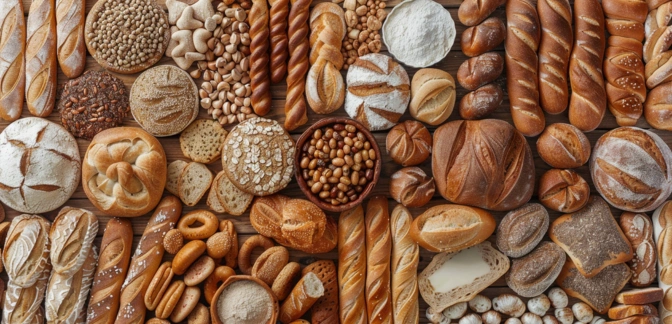Rolls — Nutrients, Health Benefits, And Shopping Tips

Written by Listonic Team
Last update on September 6, 2024
Rolls nutrients
Nutrition facts
Amount per 100 g
Calories
🔥 310 kcal
| Nutrition per: 100 g | Value | % Daily Value* |
|---|---|---|
| Carbs | 58 g | 21.09% |
| Fiber | 2 g | 7.14% |
| Sugars | 3 g | 6% |
| Glycemic Index | 73 | - |
| Protein | 9 g | 18% |
| Sodium | 490 mg | 21.3% |
| Total Fat | 4 g | 5.13% |
*The % of Daily Value (DV) tells you how much a nutrient in a serving of food contributes to a daily diet. 2,000 calories a day is used for general nutrition advice.
3 g
🍏 Low Sugar Content
Rolls facts & tips
Health benefits
- Provides carbohydrates, which are a primary source of energy for the body and brain.
- Can contain fiber if made with whole grains, promoting digestive health.
- Versatile, serving as a base for various fillings and toppings to enhance nutritional value.
- Contains essential vitamins and minerals if made from enriched flour, such as B vitamins and iron.
Health risks
- High carbohydrate content particularly in rolls made from refined white flour, which can cause rapid spikes in blood sugar levels, particularly concerning for diabetics.
- Low nutrient density as refined rolls offer limited vitamins and minerals compared to whole grain options.
- High calorie content especially when buttered or served with calorie-dense foods, contributing to weight gain if consumed frequently.
- Potential for overconsumption due to their palatable nature, leading to excessive calorie intake if not mindful of portion sizes.
How to choose rolls
Bread rolls should have a golden-brown crust with a light, airy interior when sliced. The surface should be smooth and shiny, suggesting a proper egg wash before baking.
Do not choose rolls that are hard or have a dull, floury surface, as they might be stale. Rolls that feel heavy for their size should also be avoided, as they may not have been baked through, resulting in a doughy texture.

How to store rolls
Fresh rolls should be stored in a bread box or a cool, dry place, wrapped in a cloth or paper bag. This helps keep them soft and fresh for up to three days. For longer storage, consider freezing the rolls.
Exposure to air can cause rolls to become stale quickly. Avoid storing them in plastic bags without ventilation, as this can trap moisture and lead to mold. Always reheat frozen rolls in the oven to restore their freshness and texture.
✅ Extra Tip
How long do they last?
Rolls can last for 2-3 days at room temperature when stored in an airtight container. For longer storage, rolls can be frozen for up to 3 months.
What to do with leftovers?
Leftover rolls can be used in a variety of savory and sweet dishes. Slice them in half and use as a base for sandwiches or sliders, or toast them and serve with butter, jam, or honey for a quick breakfast. Rolls are also great when turned into croutons by cubing, tossing with olive oil and seasonings, and baking until crispy.
Use leftover rolls to make a bread pudding by tearing them into pieces and mixing with eggs, milk, and spices, then baking until set. If you have a lot of rolls, consider making a batch of garlic bread by spreading them with garlic butter and baking until golden. Rolls can also be sliced, dipped in egg mixture, and fried for French toast, or used as a base for mini pizzas with your favorite toppings. For a quick snack, enjoy rolls with cheese and cold cuts, or warm them and serve with soup or salad.
👨⚕️️ Medical disclaimer
Discover products from other categories
Listonic Team
Fact-checked
Our editorial team checked this article to make sure it was accurate at the time of publishing it.
Get the top-rated shopping list app on your phone!







